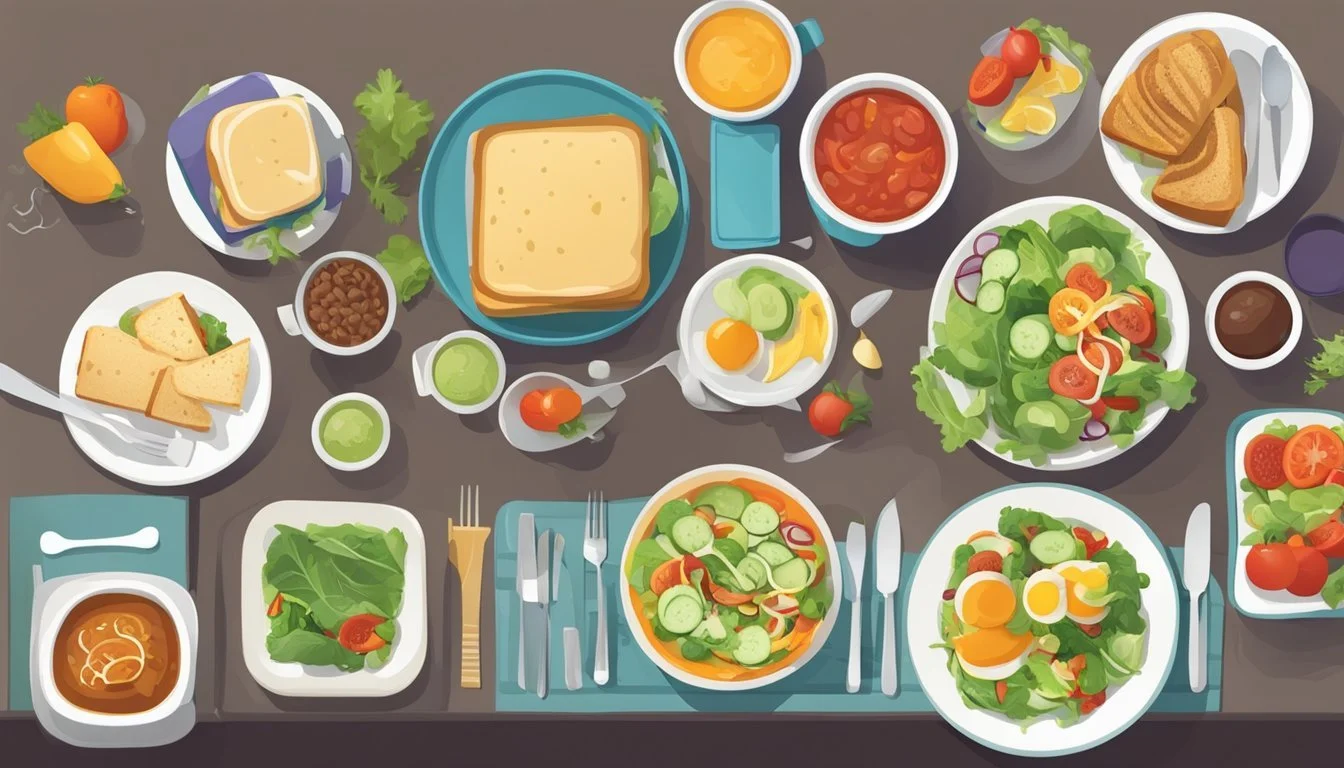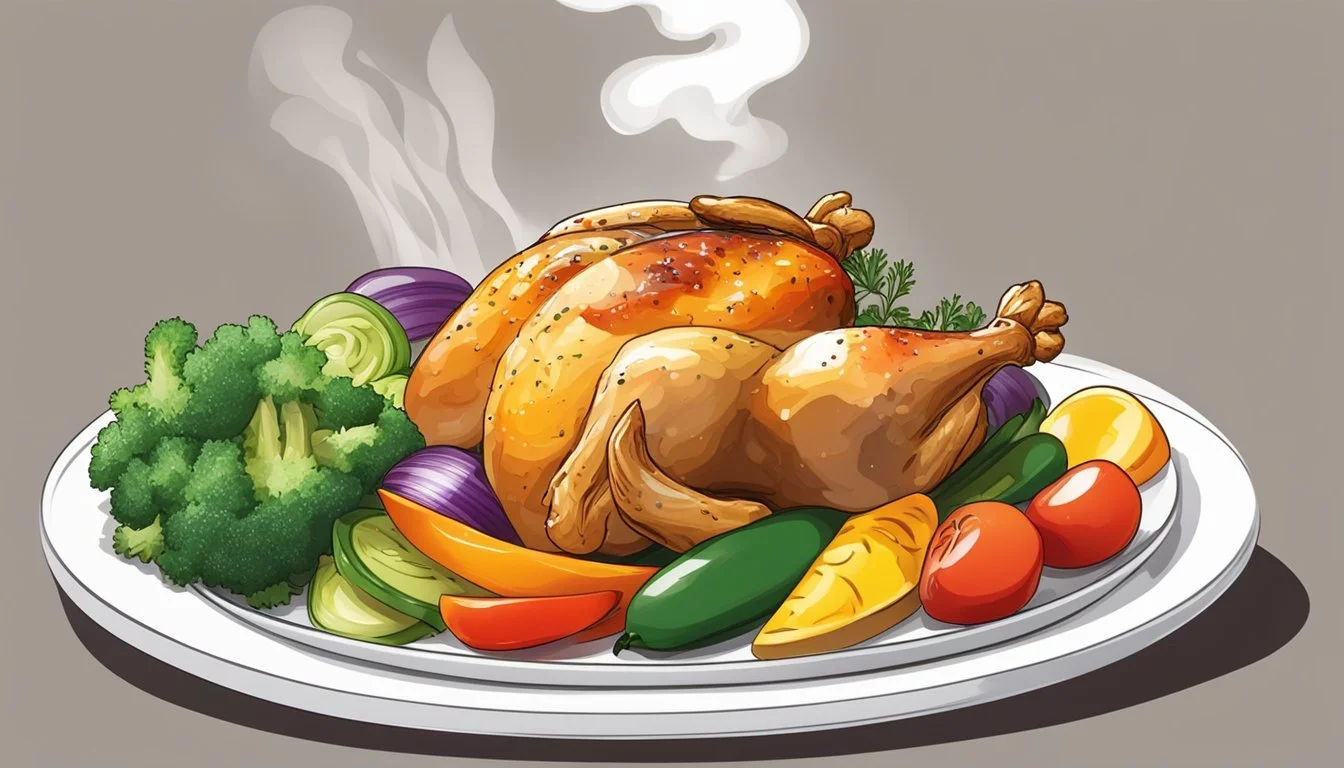7 Easy Lunch Recipes to Manage Your Blood Sugar
Quick and Healthy Options
Maintaining healthy blood sugar levels through diet doesn't have to be a challenging task. By incorporating easy-to-make, nutritionally balanced lunch recipes into your daily routine, you can take significant steps towards managing your blood sugar. These recipes are designed to provide sustained energy and keep you feeling satisfied without causing spikes in your glucose levels. Discovering simple and effective meal options can be a game-changer for anyone looking to support their health through thoughtful eating habits.
Eating well is essential for blood sugar management, whether you have diabetes or are simply striving for better wellness. The right lunch can make a noticeable difference in how you feel throughout the day. This article aims to introduce you to seven easy, practical lunch recipes specifically curated to help maintain stable blood sugar levels.
1) Quinoa and Black Bean Salad
Quinoa and Black Bean Salad offers a balanced meal that is both nutritious and easy to prepare. This salad is rich in protein, fiber, and essential vitamins, making it an excellent choice for managing blood sugar levels.
To make this salad, start by cooking one cup of quinoa. Use two cups of water and bring it to a boil before letting it simmer for about 15 minutes, or until the water is absorbed. Fluff the quinoa with a fork and set it aside to cool.
While the quinoa is cooling, chop the vegetables. You will need tomatoes, red onion, and cilantro. Add these chopped vegetables to a large bowl along with black beans.
For extra flavor, include diced jalapeno, minced garlic, and freshly squeezed lime juice.
Mix in olive oil and season with cumin, salt, and pepper to taste.
Once the quinoa has cooled, add it to the bowl and toss everything together until well combined.
This Quinoa and Black Bean Salad can be served immediately or stored in the refrigerator for later use. It’s a great option for a quick lunch that helps keep blood sugar levels in check.
2) Grilled Chicken with Veggies
Grilled chicken with veggies can be a great option for those looking to manage their blood sugar. Chicken provides lean protein, which helps keep energy levels stable. Grilling the chicken ensures it contains little added fat, making it a healthy choice.
Season the chicken breasts with salt, pepper, and a pinch of cumin. This combination adds flavor without extra carbs. Cook the chicken on a preheated grill pan for about 6-7 minutes per side until it's fully cooked.
Accompanying the grilled chicken with non-starchy vegetables such as bell peppers, zucchini, and broccoli adds important fiber and nutrients. Grill the vegetables alongside the chicken, lightly seasoning with olive oil, salt, and pepper.
These veggies not only add flavor and texture but also help control blood sugar levels. The fiber in vegetables slows down the absorption of sugars, preventing spikes in blood glucose.
By combining lean protein with fiber-rich vegetables, this dish supports balanced blood sugar and provides a well-rounded, nutritious meal.
3) Lentil and Spinach Soup
Lentil and spinach soup is a nutritious, filling option perfect for managing blood sugar.
Start by heating olive oil in a pot over medium heat. Add finely chopped onions and carrots, sautéing until the onion is soft and golden. Next, stir in garlic until fragrant.
Incorporate tomato paste, cumin, cayenne, salt, and black pepper. Let the spices blend for a couple of minutes.
Rinse the lentils thoroughly. Add them to the pot along with vegetable broth, ensuring the mixture is well-combined.
Bring the soup to a boil, then reduce to a simmer. Allow it to cook gently for about 30 minutes.
Add fresh spinach to the pot. Cook just until the spinach wilts, retaining its vibrant color. Finish with a squeeze of lemon juice, which adds a refreshing tang.
Season the soup with extra salt and pepper if needed. Serve hot, and enjoy the balance of flavors and textures.
This lentil and spinach soup is not only easy to prepare but also beneficial for anyone looking to stabilize their blood sugar levels.
4) Turkey and Avocado Wrap
Turkey and avocado wraps are a flavorful and convenient option for those looking to manage their blood sugar levels.
These wraps combine lean turkey, creamy avocado, and fresh vegetables to create a nutritious meal. The recipe is simple and quick to prepare, making it perfect for busy schedules.
The avocado provides healthy fats, which help improve satiety and stabilize blood sugar levels. Turkey offers lean protein, which is essential for maintaining muscle mass and promoting fullness.
Adding vegetables like lettuce, tomatoes, and cucumbers enhances the wrap's fiber content. Fiber slows down the digestion process, contributing to more stable blood sugar levels.
Additionally, these wraps are versatile. Variations can easily be made by incorporating different veggies or using gluten-free wraps for those with dietary restrictions.
To assemble, layer slices of turkey, avocado, and vegetables onto a whole-grain or low-carb wrap. Roll it up tightly, and it's ready to go. This recipe ensures a balanced, delicious meal that supports blood sugar management.
5) Chickpea and Cucumber Salad
Chickpea and cucumber salad is a refreshing and nutritious option for lunch. It's easy to prepare and packed with ingredients beneficial for managing blood sugar levels.
Start by draining and rinsing a can of chickpeas. Place the chickpeas in a large bowl. Chop cucumbers, red onions, and bell peppers, and add them to the bowl with the chickpeas.
For added flavor, include kalamata olives, feta cheese, and fresh herbs like mint or basil. These ingredients not only enhance the taste but also offer various health benefits.
Prepare a simple dressing by whisking together olive oil, lemon juice, kosher salt, and black pepper. Pour the dressing over the salad and toss gently to ensure all components are well-coated.
This salad can be enjoyed immediately or stored in the refrigerator. If you prefer a bit more texture, you can even cook some garlic and cumin seeds in a skillet until the garlic is golden brown and add it to the salad.
Serve the salad chilled or at room temperature. It's a versatile dish that can be eaten alone or paired with greens for an extra nutritional boost.
6) Baked Salmon with Asparagus
Baked salmon with asparagus is a nutritious and straightforward meal packed with health benefits. This dish is ideal for those looking to manage their blood sugar levels while enjoying a delicious lunch.
Salmon, rich in omega-3 fatty acids, helps reduce inflammation and improve insulin sensitivity. Asparagus is a low-carb vegetable that pairs perfectly with salmon, providing essential vitamins and minerals.
To prepare, preheat the oven to 400°F (200°C). Place salmon fillets on a baking sheet lined with foil or parchment paper. Season the salmon with salt, pepper, and garlic powder.
Add washed and trimmed asparagus spears around the salmon. Drizzle olive oil over the asparagus and sprinkle some more salt and pepper. For additional flavor, add lemon slices on top of the salmon and asparagus.
Fold the foil over the salmon and asparagus to create a sealed packet. Bake in the oven for about 15-20 minutes, until the salmon is cooked through and flakes easily with a fork.
This baked salmon with asparagus recipe is a quick, tasty, and effective way to keep blood sugar levels stable while enjoying a satisfying meal.
7) Greek Yogurt and Berry Bowl
A Greek Yogurt and Berry Bowl makes an excellent lunch option for those looking to manage their blood sugar levels.
It's quick and easy to prepare and packed with protein.
Start with plain Greek yogurt to keep added sugars low. Greek yogurt provides a creamy base that is rich in protein and probiotics.
Top with a variety of fresh or frozen berries. Berries like strawberries, blueberries, and raspberries offer natural sweetness without spiking blood sugar.
Add a handful of nuts, such as walnuts or almonds, for extra crunch and healthy fats. These fats can help stabilize blood sugar levels and keep you feeling full longer.
Finish with a light drizzle of honey or a few drops of stevia if additional sweetness is desired. This can enhance flavor without adding too many extra carbs.
This simple yet nutritious meal provides a perfect balance of protein, healthy fats, and fibers. Perfect for anyone looking to maintain steady energy throughout the day.
Understanding Blood Sugar Management
Effective blood sugar management revolves around dietary choices and meal timing. Consistently monitoring what you eat and having regular meals can maintain stable blood sugar levels.
The Role of Diet in Blood Sugar Control
The type of carbohydrates consumed directly impacts blood sugar levels. Complex carbohydrates such as whole grains, legumes, and vegetables digest slower, leading to gradual increases in blood sugar. This can prevent sharp spikes and drops in glucose levels.
High-fiber foods are essential. They slow digestion and carbohydrate absorption, which helps manage blood sugar levels. Nonstarchy vegetables like spinach, kale, and broccoli are excellent choices.
Healthy fats and proteins also play significant roles. Foods such as avocados, nuts, fish, and lean meats provide the body with slow-releasing energy sources, aiding in better blood sugar regulation.
Importance of Regular Meals
Regular meals prevent dips and spikes in blood sugar levels. Skipping meals can lead to hypoglycemia (low blood sugar), which might cause dizziness, fatigue, or irritability. Eating at regular intervals helps maintain glucose levels throughout the day.
Small, frequent meals allow for steadier blood sugar control. Balanced snacks with a mix of carbs, protein, and fats, like an apple with peanut butter or yogurt with berries, can provide sustained energy and better glucose balance.
Keeping a consistent eating schedule supports metabolic efficiency. This ensures the body receives a steady supply of energy, vital for managing blood sugar levels effectively.
Nutritional Guidelines for Lunch Recipes
To manage blood sugar effectively, lunch recipes should focus on a balance of macronutrients, fiber-rich foods, and low glycemic index ingredients. These elements help maintain steady energy levels and prevent blood sugar spikes.
Balancing Macronutrients
Balancing macronutrients is crucial for stabilizing blood sugar. Protein, fat, and carbohydrates should be included in each meal. For protein, lean options like chicken, fish, or plant-based proteins such as tofu or chickpeas are ideal. Healthy fats from avocado, nuts, and olive oil can slow digestion and glucose absorption.
Carbohydrates should come from whole grains like quinoa and brown rice. This balance ensures sustained energy and avoids sudden dips or spikes in blood sugar levels. Portion control is also vital; moderate servings prevent overeating and excess calorie intake.
Incorporating Fiber-Rich Foods
Fiber plays a key role in blood sugar management. It slows the absorption of sugar, preventing rapid spikes. Nonstarchy vegetables like broccoli, spinach, and bell peppers are excellent sources. Incorporating legumes such as lentils and black beans adds soluble fiber that aids digestion.
Whole grains like oats and barley provide additional fiber and should be preferred over refined grains. Seeds like chia and flaxseed not only increase fiber content but also provide essential nutrients. Aim for at least 7 grams of fiber per serving in your lunch recipes.
Choosing Low Glycemic Index Ingredients
Low glycemic index (GI) ingredients help manage blood sugar by causing a slower rise in glucose levels. Choose whole fruits over fruit juices; examples include berries, apples, and pears. Vegetables like sweet potatoes, carrots, and green beans have a lower GI.
Whole grains, particularly quinoa and bulgur, fall into this category as well. It's important to pair these ingredients with proteins and healthy fats to further stabilize blood sugar. Avoid high GI foods such as white bread and sugary snacks; they lead to rapid glucose spikes and subsequent crashes.
Planning and Preparing Easy Lunch Meals
Efficient preparation and the right kitchen tools can make managing blood sugar through meal planning more achievable. Batch cooking and time-saving tools are key strategies.
Batch Cooking Tips
Batch cooking can simplify lunch preparation for the entire week. Start by selecting recipes that can be easily stored and reheated, such as soups, chili, and grain bowls.
Labeling containers with dates and contents can help maintain organization.
Using freezer-friendly bags or containers allows for various portion sizes, making it easier to grab a quick meal.
Consider recipes like bean salads or whole grain pasta dishes, which remain fresh over several days and are packed with fiber and protein.
Time-Saving Kitchen Tools
Utilizing the right kitchen gadgets can significantly reduce the time spent on meal prep. Instant Pots or pressure cookers speed up cooking times for beans, grains, and meats.
Vegetable choppers and food processors can expedite chopping, slicing, and dicing, saving valuable minutes.
Slow cookers allow for the hands-off cooking of soups and stews. Meal-prep containers with compartments keep ingredients separated and fresh, making for easy assembly of lunches like salads or wraps.
Investing in these tools helps streamline the preparation process and ensures consistent meal quality.







